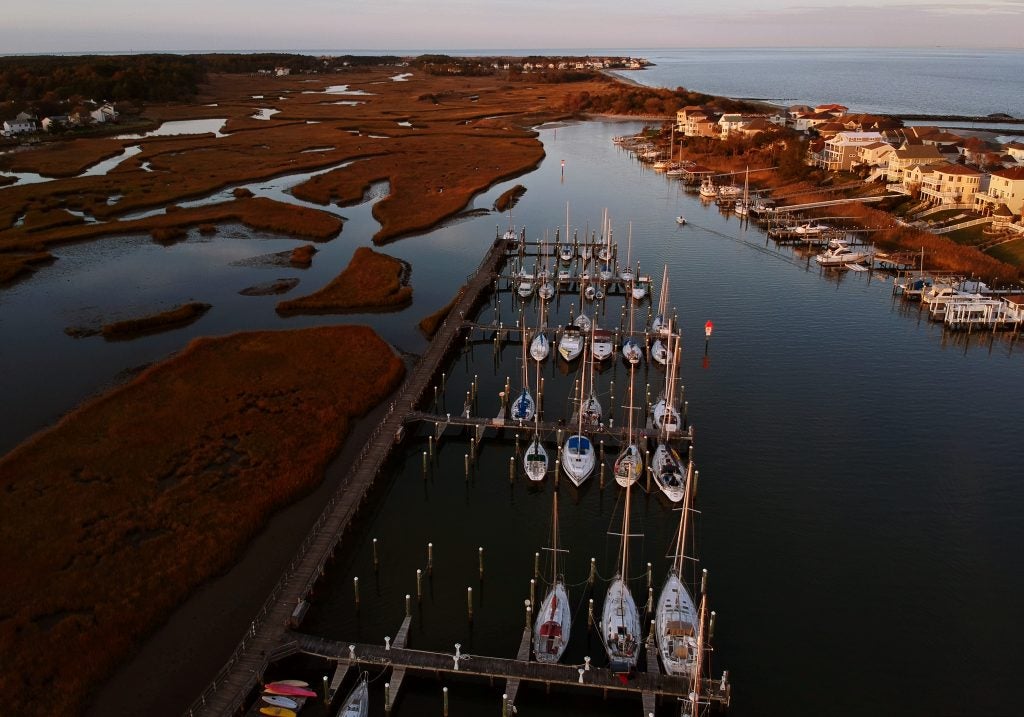Virginians are already seeing the impacts of climate change, from sea level rise along our coastlines to increased rainfall statewide. Without action, Virginians can expect $4.1 billion in annual losses to residential, commercial and public structures by 2080, with 171,000 acres of tidal marsh at risk of disappearing.
To better understand this risk, EDF worked with Virginia Conservation Network partners to release a policy paper that outlines Virginia’s flood risk and presents opportunities to build resilience.
Additionally, the Virginia Academy of Science, Engineering and Medicine recently released a report analyzing climate change impacts on Virginia’s coastal areas and offering specific ways to address them.
The sentiment of these two analyses is the same: Climate change is here, and we must act quickly to build resilience for our communities.
Here are three of the top recommendations for state leaders to take an equitable and comprehensive approach to flood resilience to protect Virginia’s communities, ecosystems, infrastructure and economy.
1. Build on recent momentum.
Virginia’s leadership has taken important steps to reduce flood risk and build flood resilience, but continued action is urgently needed.
The state will release a Coastal Resilience Master Plan at the end of the year and has multiple efforts underway to model comprehensive flood risk. These statewide, coordinated actions are essential to accessing funding, advancing flood and rainfall data and modeling initiatives, and ensuring that the state government can support all Virginians in adapting to our rapidly-changing climate.
Gov. Northam has also advanced several resilience initiatives through executive orders and the Secretary of Natural Resources’ office, but these advances should be made permanent.
This should include expanding the Coastal Resilience Master Plan to cover the entire commonwealth, continuing to rely on best available science and subject matter experts, updating the plan every four years, linking the plan to funding opportunities, and increasing meaningful engagement efforts and incentivizing participation by localities and community members.
Virginia also needs adequate resources and agency staff to provide oversight and accountability. A clear plan is key to identifying additional sources of funding and implementing financing strategies to support communities as they build capacity and implement resilience solutions.

Scenes as the sun begins to set on a chilly November day over the Salt Ponds Marina in Hampton, Virginia. Nov 5, 2020. (Photo by Aileen Devlin | Virginia Sea Grant)
2. Advance equity through funding and policies.
Communities across the state are already feeling the effects of flooding, but these risks are not equally distributed.
Chronically underserved and under-resourced communities in Virginia face disproportionate risks due to historic redlining and discriminatory zoning laws. Helping our most vulnerable communities increases community resilience statewide.
Some communities have identified billions of dollars in needed resilience investments, while many have not yet begun to calculate the costs.
One opportunity to direct resources where they are most needed is through the statewide Community Flood Preparedness Fund. This fund is projected to raise upwards of $750 million over the next decade for community capacity building and project implementation, with 25% set aside for low-income areas. The first of these grants announced $7.8 million in funding this week. The Department of Conservation and Recreation is planning to work with unsuccessful grantees to improve their applications for the next call for grants, which is currently open. This is just a start.
Now, more than ever, localities across Virginia should take advantage of available funds to build resilience. And policymakers in Virginia should look to peer states like North Carolina for innovative financing strategies that emphasize nature-based solutions and funding for under-resourced communities.
3. Learn from the past, plan for the future.
City and county leaders will be faced with difficult decisions in years ahead. Virginia must prioritize equipping local leaders with the data and tools they need to develop robust comprehensive plans for their communities reflecting climate impacts.
Effective planning will ensure the equitable and cost-effective protection and adaptation of our communities and environment in the future, including, in some cases, a coordinated
Climate change is here. Virginia must increase collaboration and coordination, invest in best-available science, data and modeling, and engage directly with residents, businesses and localities to plan for a wetter future.
We can’t afford to lose momentum— Virginia’s leaders must hit the ground running and continue to advance key resilience initiatives in 2022.









